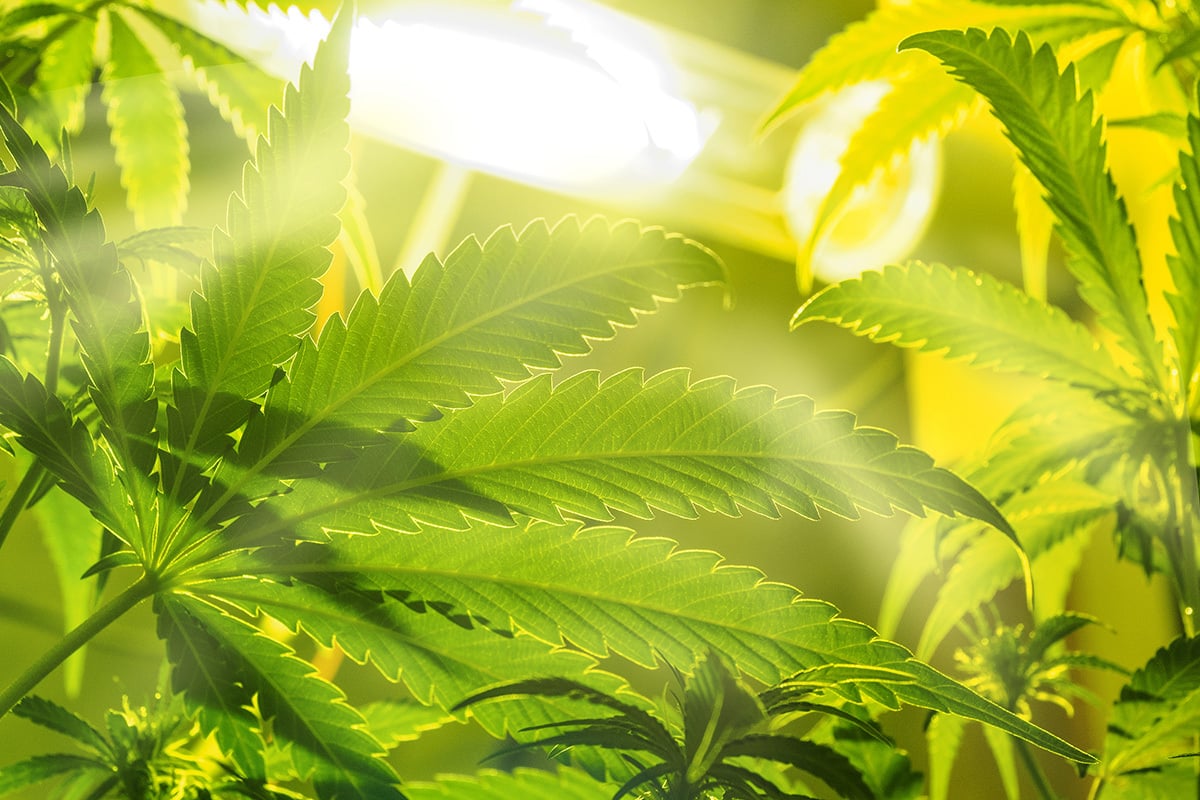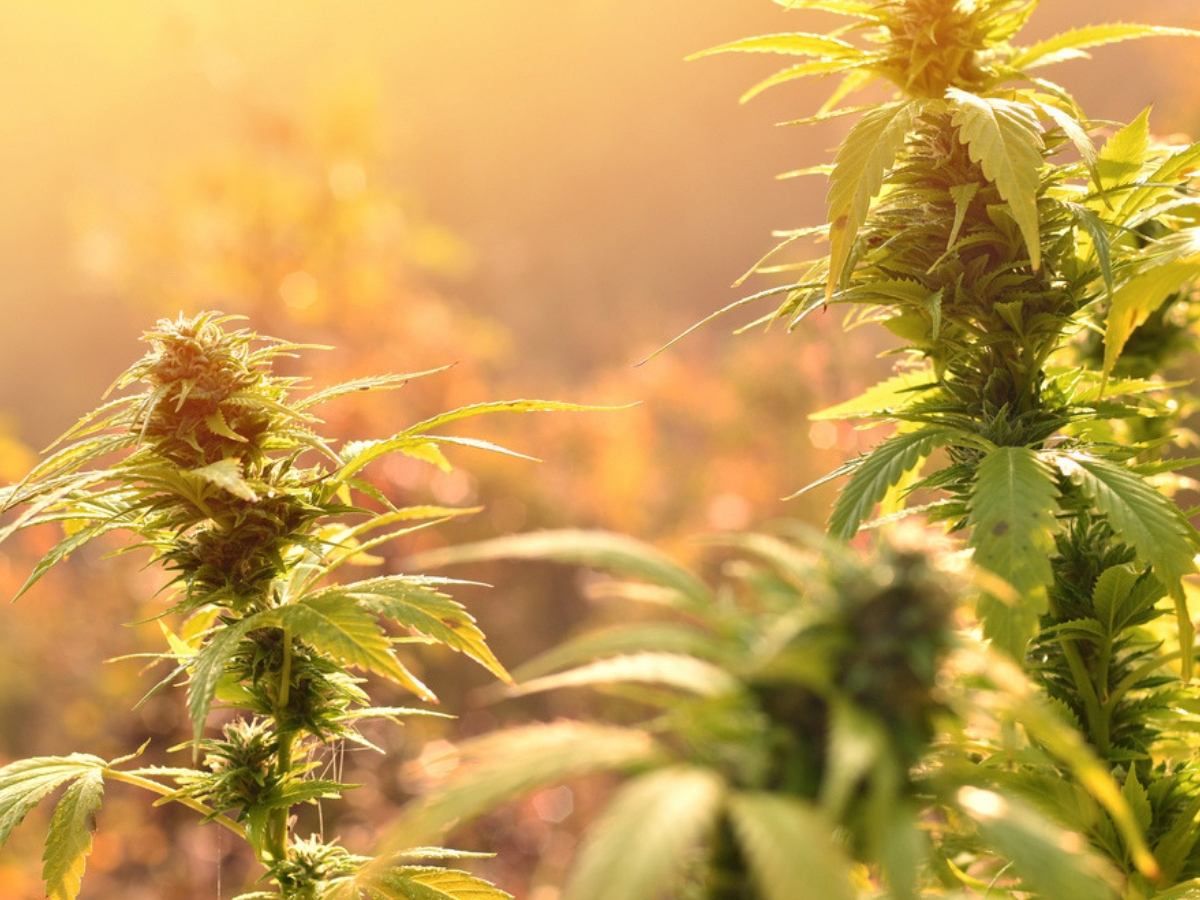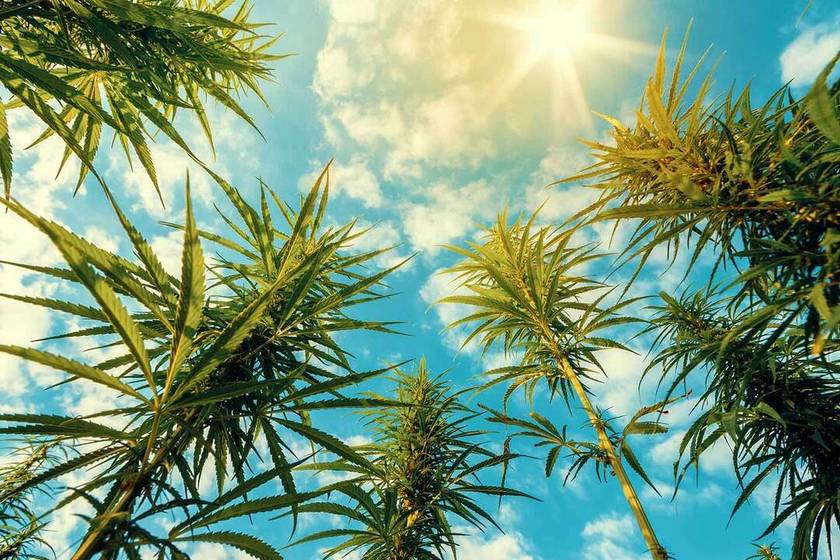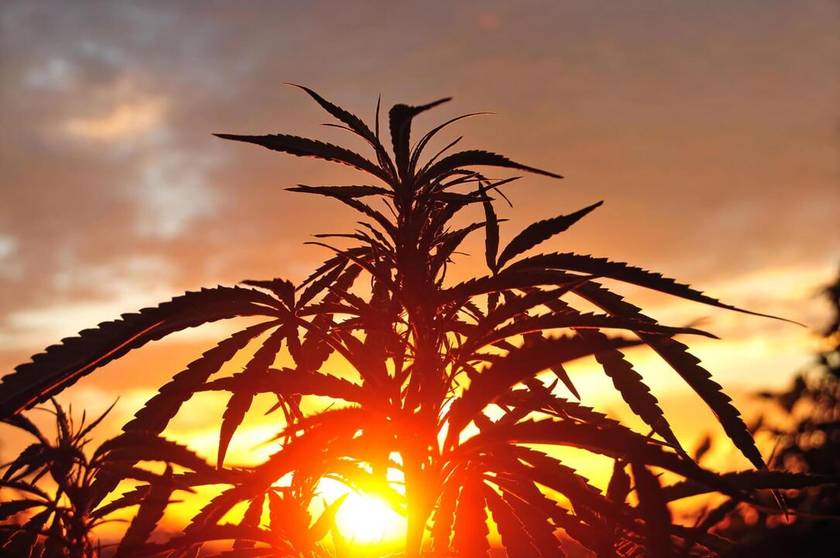Les plants de cannabis sont très sensibles aux facteurs environnementaux, et la lumière directe du soleil peut être particulièrement nocive pour leur croissance pendant la phase de floraison et la période de récolte. Bien que la lumière naturelle du soleil soit importante pour le développement des plants de cannabis, une exposition excessive à la lumière directe du soleil peut entraîner un stress environnemental et des dommages causés par la chaleur, entraînant finalement un retard de croissance et une réduction des récoltes. C'est pourquoi il est important de protéger les plants de cannabis du soleil.
Comment le stress thermique affecte les plants de cannabis
Les plantes de cannabis ont besoin de juste ce qu’il faut de chaleur pour prospérer. Cependant, lorsque les températures deviennent trop élevées, elles peuvent causer des dommages importants aux plantes, entraînant un affaissement ou un flétrissement des feuilles et un retard de croissance. Cette condition est connue sous le nom de stress thermique et peut avoir un impact considérable sur la croissance et le rendement des plantes de cannabis. Dans cet article, nous expliquerons comment le stress thermique affecte les plantes de cannabis et proposerons des mesures préventives que les producteurs peuvent prendre pour éviter tout dommage.
Le stress thermique se produit lorsque la température de l’environnement entourant les plants de cannabis dépasse leur seuil optimal. Pour les plants de cannabis, la plage de température idéale se situe entre 20 et 30 °C (68 et 86 °F). Toute température supérieure à cette plage peut entraîner un stress thermique et endommager les plantes. Les effets du stress thermique peuvent ne pas être immédiatement évidents et plusieurs jours peuvent s’écouler avant que des signes visibles de dommages n’apparaissent.
Les signes de stress thermique comprennent des feuilles tombantes ou flétries, des feuilles brûlées ou enroulées et un retard de croissance. Les plantes peuvent également subir une réduction de la qualité et du rendement, entraînant une moindre valeur de la récolte. De plus, pendant la phase de floraison, une chaleur excessive peut entraîner une réduction de la production de trichomes et, par conséquent, réduire la puissance de la plante de cannabis.
À Lire Plus: Comment utiliser la mélasse pour cultiver du cannabis
Quelles sont les causes du stress thermique ?
Dans les climats chauds, une exposition prolongée à la lumière directe du soleil peut provoquer un stress thermique, entraînant de graves dommages ou la mort des plantes. Le stress thermique se produit lorsque la température interne d’une plante dépasse ses niveaux de tolérance, altérant ainsi ses processus métaboliques.
Les facteurs qui augmentent les risques de stress thermique chez les plants de cannabis comprennent une faible humidité, une lumière excessive et une mauvaise ventilation. Par temps chaud, le niveau d’humidité diminue, ce qui fait que la plante perd davantage d’eau par transpiration.
Cela peut entraîner une déshydratation et un flétrissement. Une lumière ou un ensoleillement excessif peuvent également provoquer un stress thermique, notamment pendant la période de floraison. De plus, une mauvaise circulation de l’air ou de l’air stagnant augmente le risque de formation de poches de chaleur autour des plantes, exacerbant encore les symptômes du stress thermique.
À Lire Plus:Culture de cannabis hydroponique ou en terre
Protéger votre jardin de cannabis extérieur du soleil
Protéger votre jardin de cannabis extérieur du soleil est crucial pour garantir une culture saine et réussie. La lumière directe du soleil, les températures extrêmes et le stress environnemental peuvent tous avoir des effets négatifs sur vos plants de cannabis, entravant leur croissance et réduisant votre rendement final. Que vous soyez un cultivateur extérieur chevronné ou tout juste débutant, il est important de prendre des mesures pour protéger vos plantes du soleil et garantir qu'elles puissent prospérer dans l'environnement extérieur. Voici quelques trucs et astuces pour protéger votre jardin de cannabis extérieur du soleil.
Structures d'ombrage adéquates et placement intelligent des plantes
L'une des choses les plus importantes à considérer lors de la culture du cannabis en extérieur est de savoir comment le protéger des rayons nocifs du soleil. La lumière directe du soleil peut provoquer un stress environnemental et un stress thermique, ce qui peut avoir un impact négatif sur la croissance et le développement de vos plants de cannabis. Pour résoudre ce problème, les producteurs de cannabis doivent envisager des structures d’ombre adéquates et un placement intelligent des plantes.
Les structures d’ombrage peuvent fournir un soulagement de la lumière directe du soleil et protéger les plantes de cannabis en extérieur des rayons chauds et vigoureux du soleil. Plusieurs types différents de structures d’ombrage peuvent être utilisés, notamment des parapluies, des bâches et des toiles d’ombrage.
Chaque type de structure a ses avantages et ses inconvénients. Les parapluies, par exemple, peuvent être déplacés facilement mais ne sont pas idéaux pour les grandes cultures en extérieur. Les bâches peuvent offrir une excellente protection, mais pourraient ne pas être idéales par temps extrêmement chaud en raison de leur manque de ventilation. La toile d’ombrage, en revanche, est une option populaire pour les cultivateurs de cannabis en extérieur en raison de sa facilité d’utilisation et de ses excellentes capacités de fourniture d’ombre.
Un autre facteur important à prendre en compte lors de la fourniture d’ombre est la direction du soleil tout au long de la journée. La trajectoire du soleil change continuellement et peut varier en fonction du lieu et de la période de l'année. Il est important d'être conscient de ces changements et de positionner vos plantes en conséquence.
En plantant du cannabis dans des zones naturellement ombragées par des arbres ou des bâtiments, vous pouvez optimiser davantage la protection contre les rayons nocifs du soleil. De plus, planter des plantes plus hautes à côté de plantes plus courtes peut créer de l’ombre naturelle et offrir des conditions de croissance en extérieur optimales.
Pratiques d'arrosage pour gérer les températures élevées
Lors de la culture de plants de cannabis en extérieur, les effets du stress thermique peuvent être une préoccupation majeure par temps chaud. De bonnes pratiques d’arrosage peuvent grandement contribuer à prévenir les dommages causés par la chaleur à vos plantes.
- Horaire
L'horaire est essentiel lorsqu’il s’agit d’arroser vos plants de cannabis par temps chaud. Nous recommandons d'éviter d'arroser pendant les heures les plus chaudes de la journée, car cela pourrait faire en sorte que les gouttelettes d'eau agissent comme une loupe pour les rayons du soleil, ce qui entraînerait une augmentation des dommages causés par la chaleur aux tissus végétaux. Essayez plutôt d’arroser tôt le matin ou après le coucher du soleil lorsque les températures sont plus fraîches.
- Quantité
Par temps chaud, il est important de faire attention à la quantité d’eau appliquée à vos plantes. Un arrosage excessif peut être aussi nocif qu’un sous-arrosage, car il peut entraîner la pourriture des racines et d’autres problèmes. Pour éviter cela, assurez-vous que le sol est sec jusqu’au premier joint avant d’arroser vos plantes. Lorsque vous arrosez, appliquez suffisamment d’eau pour saturer le sol, mais veillez à ne pas en faire trop, car cela pourrait entraîner un engorgement.
- Qualité
La qualité de l’eau que vous utilisez pour arroser vos plants de cannabis est également importante. Assurez-vous que l’eau est exempte de contaminants et a un pH neutre. L’utilisation d’une source d’eau de bonne qualité peut aider à prévenir les carences en nutriments et d’autres problèmes pouvant affecter la santé de vos plantes.
- Pots en tissu
L’utilisation de pots en tissu peut être un excellent moyen de gérer l’arrosage par temps chaud. Ces pots assurent un bon drainage et permettent à l'oxygène d'atteindre les racines des plantes, ce qui est essentiel à une croissance saine. Les pots en tissu sont également moins sujets à un arrosage excessif et peuvent aider à prévenir la pourriture des racines, un problème courant associé à un arrosage excessif.
À Lire Plus: Le guide ultime de la supercropping du cannabis
Stratégies de paillage pour réduire les effets de la chaleur dans le sol
Les effets de conditions météorologiques extrêmement mauvaises sur les plantes de cannabis peuvent être dévastateurs, surtout lorsque la plante est en phase de floraison ou pendant la période de récolte. Cependant, une technique efficace pour lutter contre le climat chaud consiste à utiliser des stratégies de paillage. Le paillage peut diminuer les effets de la chaleur dans le sol et protéger les racines peu profondes des plants de marijuana des températures élevées.
Le paillage est le processus consistant à répandre une couche de matière organique comme de la paille ou de l'herbe coupée sur le sol. Cela agit comme une barrière entre le soleil et le sol, empêchant l’humidité de s’évaporer et protégeant davantage les racines peu profondes des effets nocifs de la lumière directe du soleil et de la chaleur. De plus, le paillis aide à retenir l’humidité du sol, le gardant frais et humide.
L’utilisation de matières organiques telles que le paillis présente également l’avantage supplémentaire de fournir des nutriments supplémentaires au sol lors de sa décomposition. La matière organique décomposée libère de l’azote, du potassium et du phosphore – des nutriments nécessaires à la croissance et au développement réussis des plantes de marijuana. Lorsque les plantes de cannabis reçoivent les bons nutriments au bon moment, elles sont plus résistantes aux stress environnementaux.
À Lire Plus:Comment faire pousser des graines à autofloraison
Conseils de taille pour garder votre plante au frais pendant les climats chauds
Lorsqu’il s’agit de cultiver des plants de marijuana dans des climats chauds, la gestion du stress thermique peut s’avérer une tâche difficile. Heureusement, il existe plusieurs moyens efficaces de garder vos plantes au frais et en bonne santé, dont la taille.
La taille implique l’élimination sélective des feuilles et des branches de vos plantes d’extérieur. Lorsqu'elle est effectuée correctement, cela peut aider à améliorer la circulation de l'air et à réduire les niveaux d'humidité autour de vos plantes, rendant l'environnement moins hospitalier pour les moisissures et autres parasites. Voici quelques conseils de taille pour vous aider à garder vos plantes au frais pendant les climats chauds :
- Supprimez les grandes feuilles : Lorsque les plantes entrent en phase de floraison, elles ont tendance à produire de grandes feuilles en éventail qui peuvent bloquer la lumière et la circulation de l’air vers les sites de bourgeonnement. Retirer ces grandes feuilles peut ouvrir la canopée et favoriser une meilleure circulation, ce qui aide à refroidir les plantes d'extérieur. Non seulement l’élimination des grandes feuilles permet une meilleure circulation de l’air, mais cela réduit également l’humidité dans la zone environnante.
- Fournir de l'ombre : tailler stratégiquement les feuilles peut fournir de l'ombre aux branches inférieures de la plante, ce qui peut atténuer le stress thermique. En supprimant les feuilles qui bloquent les branches inférieures de la lumière du soleil, vous pouvez créer un microclimat plus frais et plus confortable pour vos plantes.
- Coupez les branches inférieures : Pendant la phase végétative, les plants de cannabis en extérieur ont tendance à produire de nombreuses branches inférieures qui pourraient ne pas recevoir suffisamment de lumière pour produire des fleurs de qualité. Tailler ces branches inférieures peut réduire la quantité d’énergie dont la plante a besoin pour se nourrir pendant la période de floraison. Cela a pour effet de réduire le taux métabolique global de la plante, ce qui contribue à la maintenir au frais.
- Utilisez des pots en tissu : Les pots en tissu sont de plus en plus populaires parmi les producteurs de marijuana en extérieur car ils offrent une meilleure circulation de l'air que leurs homologues en plastique. Contrairement aux récipients en plastique dur, les pots en tissu laissent passer plus d’oxygène, ce qui aide à maintenir la température des racines à un niveau bas. En gardant les racines plus fraîches, la plante entière reste plus fraîche.
- Plantes compagnes : Les plantations compagnes peuvent aider les producteurs de cannabis à cultiver un écosystème diversifié qui peut aider à protéger leurs plantes du stress environnemental. Associer des plantes de cannabis à des plantes résistantes à la chaleur telles que la capucine, le souci ou la menthe peut aider à ombrager les plantes et à réduire la température globale dans la zone environnante.
À Lire Plus: Comment démarrer une graine de cannabis
Utiliser les bris de conditions météorologiques à votre avantage
Les cultivateurs de cannabis en extérieur comprennent l’importance de fournir à leurs plantes la lumière naturelle du soleil pour une croissance optimale pendant les phases végétatives et de floraison. Cependant, pendant les périodes de temps chaud ou de soleil intense, il est crucial de protéger vos plants de cannabis des stress environnementaux tels que le stress thermique et les coups de soleil. Une façon d’y parvenir est de prêter attention aux variations des conditions météorologiques.
Lorsque les prévisions annoncent des températures extrêmes ou un temps chaud, il est essentiel de garder un œil sur les cassures comme les orages ou les vents violents. Ces changements climatiques temporaires peuvent apporter un soulagement à vos plants de cannabis. Une fois que le temps devient moins extrême, amenez vos plantes à l’extérieur pour bénéficier de la lumière naturelle du soleil. Pendant cette période, assurez-vous de fournir un ombrage adéquat et une protection contre la lumière directe du soleil.
Pour protéger vos plantes, préparez-vous à utiliser des structures d'ombrage comme des bâches ou des toiles d'ombrage pour bloquer les rayons intenses du soleil. Il est préférable d'avoir ces structures à portée de main au cas où le temps changerait soudainement. Avec un ombrage approprié, vous pouvez réguler la quantité de lumière solaire que vos plantes reçoivent, les empêchant ainsi de subir les effets du stress thermique.
À Lire Plus: Combien de temps durent les graines de cannabis
Pour conclure
En résumé, protéger les plants de cannabis du soleil et des conditions météorologiques extrêmes est essentiel pour les cultivateurs en extérieur. Prendre des précautions telles que la fourniture de structures d'ombrage, le paillage et la taille peuvent aider à garder les plantes au frais pendant les climats chauds et à prévenir le stress thermique. Il est crucial de prendre des mesures pour protéger les plantes de cannabis du stress environnemental, en particulier pendant la phase de floraison et la période de récolte.


 English
English 


